Indeed the underwater world is beautiful and full of surprises; but these creatures that live there are flat out deadly. How many of them do you know about?
These are colourful, beautiful creatures that live underwater, but their one mean bite can prove fatal. Some of them are so aggressive that an encounter with them can cause you extreme poisoning, paralysis, heart attack, or even death. In no particular order, here are some of the deadliest creatures that live underwater. Plus, know where you can find them!
Stonefish

As one of the most dangerous sea creatures, Stonefish can make venom that can be fatal to human beings. Many believe that the Stonefish is the most venomous fish in the world. And rightly so. Upon exposure, the person will start to rapidly develop symptoms — paralysis followed by tissue necrosis and sometimes even heart failure. Along its back are thirteen spines, each containing a sac of venom. Stonefish are known to cause many stings each year. Their impeccable camouflaging skills make them difficult to spot.
Find them: In the waters of the Indo-Pacific region, especially around the continent of Australia.
Stargazer

This freakish-looking fish has eyes on the top of its head — like it is trying to gaze at the stars. And so the name. There are about fifty known species of this saltwater fish around the world. With its incredible camouflaging skills, the Stargazer patiently waits for its next prey at the bottom of the seabed. Their ambush tactics are one of the best, but there is more - these fish can also electrocute their prey. The two poisonous spines located just at the back of its eyelids can give 50 volts electric shocks! A stargazers’ sting is one of the most dangerous to humans. If bitten, symptoms can range from pain, swelling, redness and heat, and even shock.
Find them: In the waters of the Mediterranean as well as the Atlantic Ocean.
Titan Triggerfish
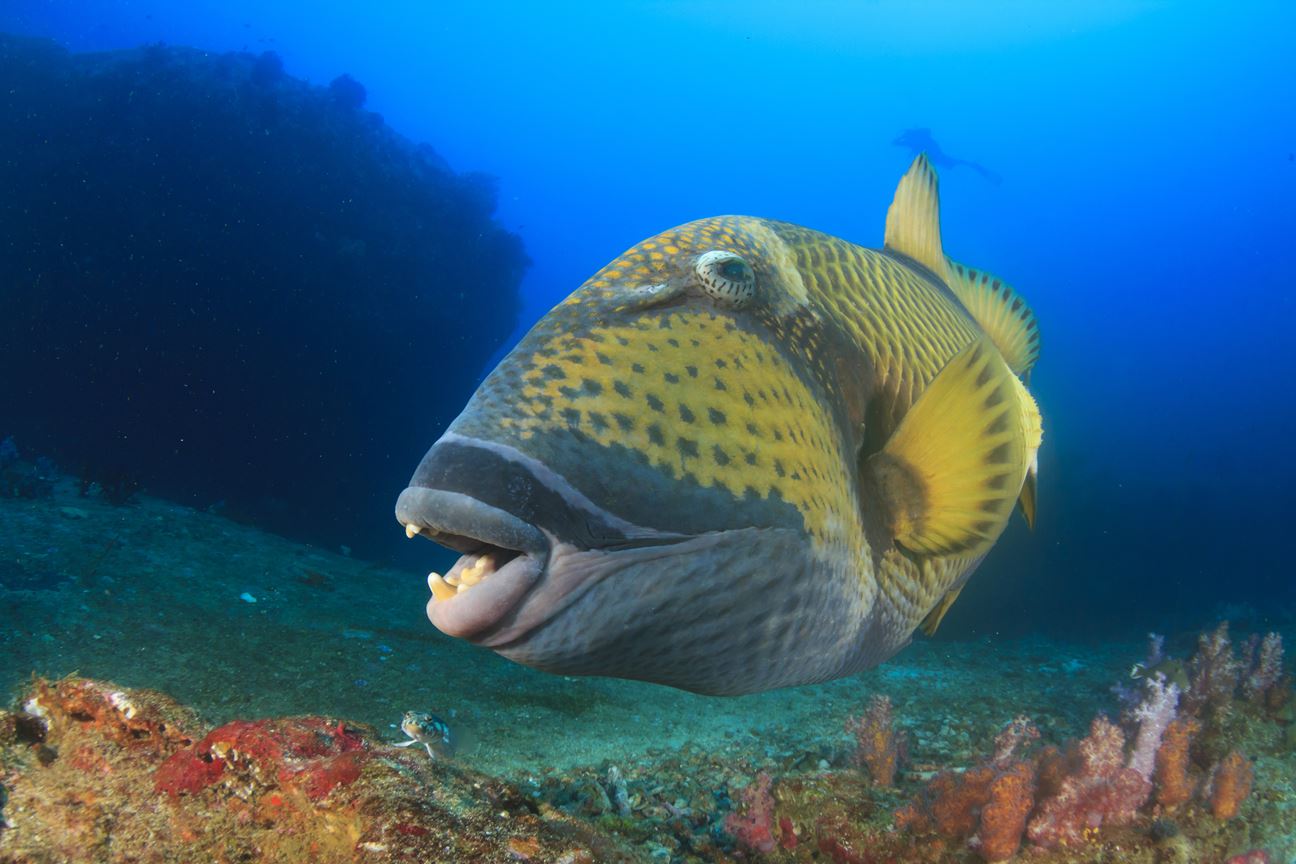
Divers and snorkelers, beware! These seemingly harmless tropical fish can send you to a hospital for a stitch or two. This feisty fish grows 40–60cm in length and is hard not to miss. They are nonvenomous, but their bite can cause you serious injuries. The Titan Triggerfish is seen swimming through the shallow waters of the Indo-Pacific ocean and is usually wary of human presence. But during mating and reproduction season, female titan triggerfish become very defensive when guarding their nests. It is best to avoid their territories, which look like the shape of an upward sand cone. When the fish attacks you, they will keep swimming at you until you are out of their territory. How to avoid them? You simply move away and ignore them when you spot one. They typically nest around April/May in some regions.
Find them: In the waters of Fiji, Australia, Philippines, Indonesia, Thailand, Maldives, and the Red Sea.
Flower Urchin
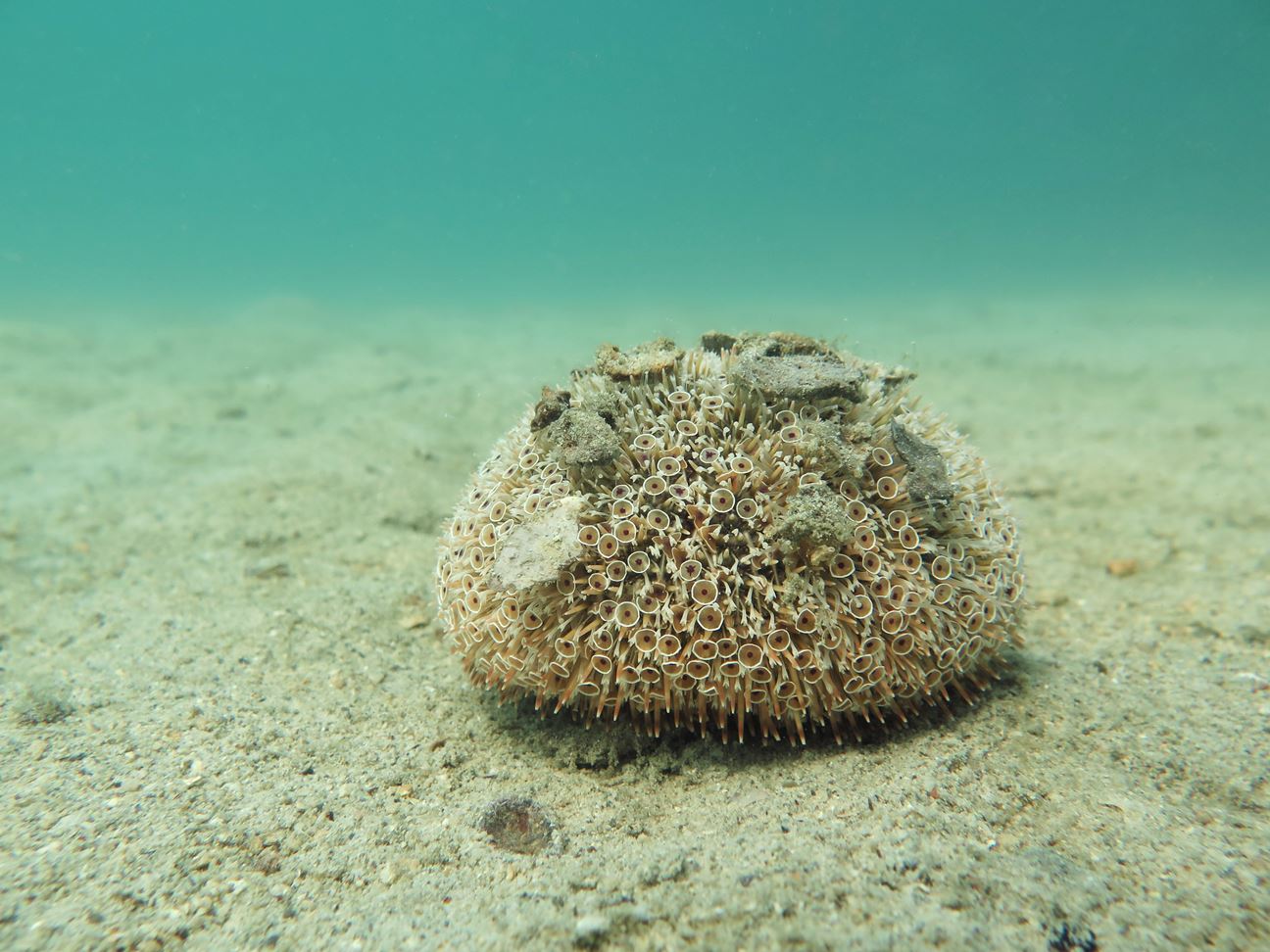
The Flower Urchin (Toxopneustes pileolus) is an attractive-looking underwater creature that is not particularly aggressive. But their likelihood of being abundantly present in the shallow waters can sometimes prove fatal to divers and snorkelers. They are found singly or in a bunch, resting on the seabed in shallow bays and lagoons. They are highly venomous and grow up to 15 centimetres wide. Their petal-like feature is called Pedicellariae, a tripled-jawed grabbing organ, which can inject venom in case of contact. In case of a minor incident, the spines injected in the skins of the victim are usually removed, resulting in some pain. But many reports suggest that the shock and pain of being stung have caused many people to lose their lives.
Find them: In the waters of the Indo-Pacific ocean region - from East Africa to Southern Japan, Indonesia, and the Cook Islands.
Lionfish
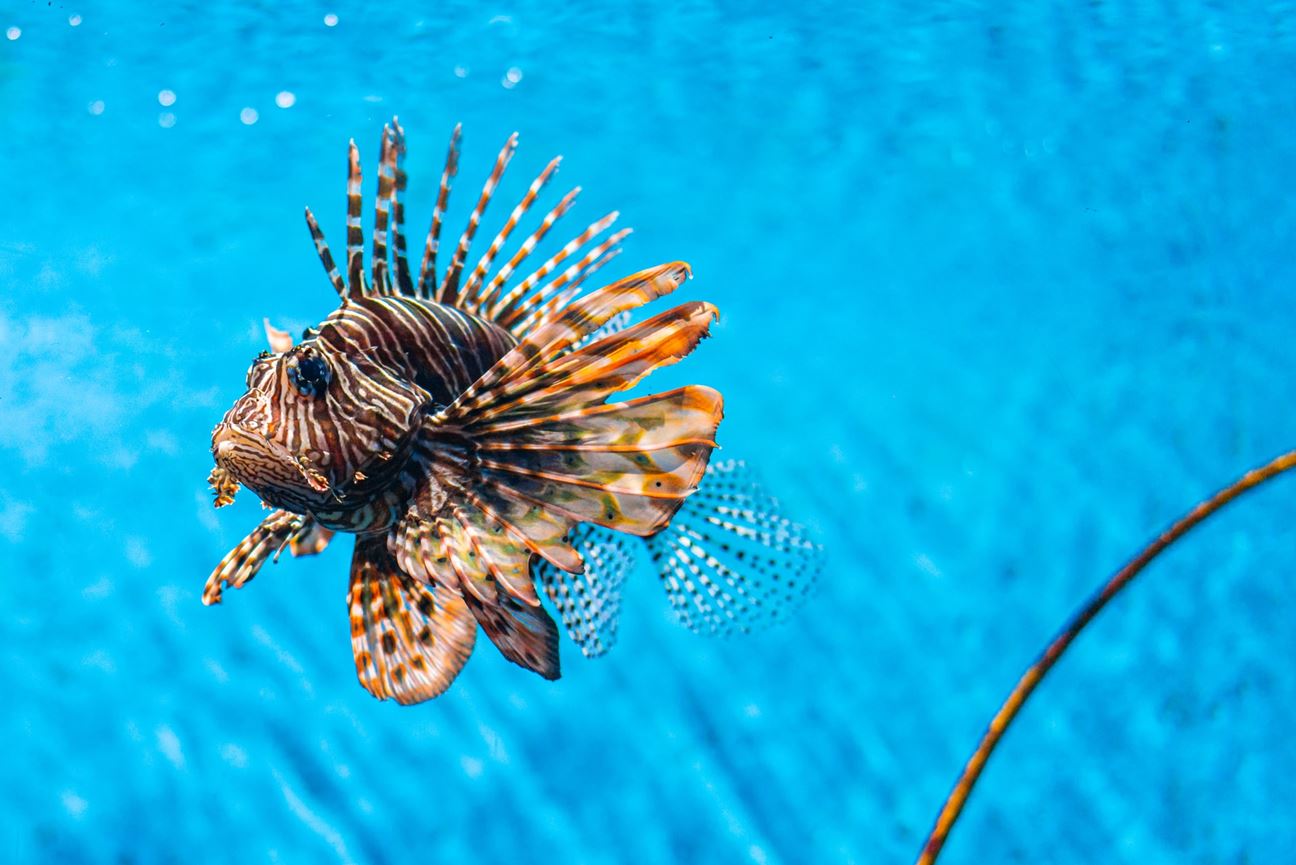
Lionfish, or Pterois, is a venomous marine fish that looks lovely with its bold colours and gently wavy fins. As adults, they grow 13 to 15 inches long and look quite delicate. But beware! The protrusions or the venomous spines along their back and underside are used for their defence and can deliver a painful sting. This sting can cause localized pain, swelling, blistering, and sweating. In serious cases, the sting can also result in the person going into an anaphylactic shock, having respiratory distress or paralysis. These fish are usually not aggressive towards human beings, but an injurious encounter will happen only when the fish find themselves threatened.
Find them: In the waters of the South Pacific and Indian oceans — from Australia to Japan and South Korea. Non-native lionfish are also found in the Atlantic Ocean, the Caribbean Sea and the Gulf of Mexico.
Blue-Ringed Octopus
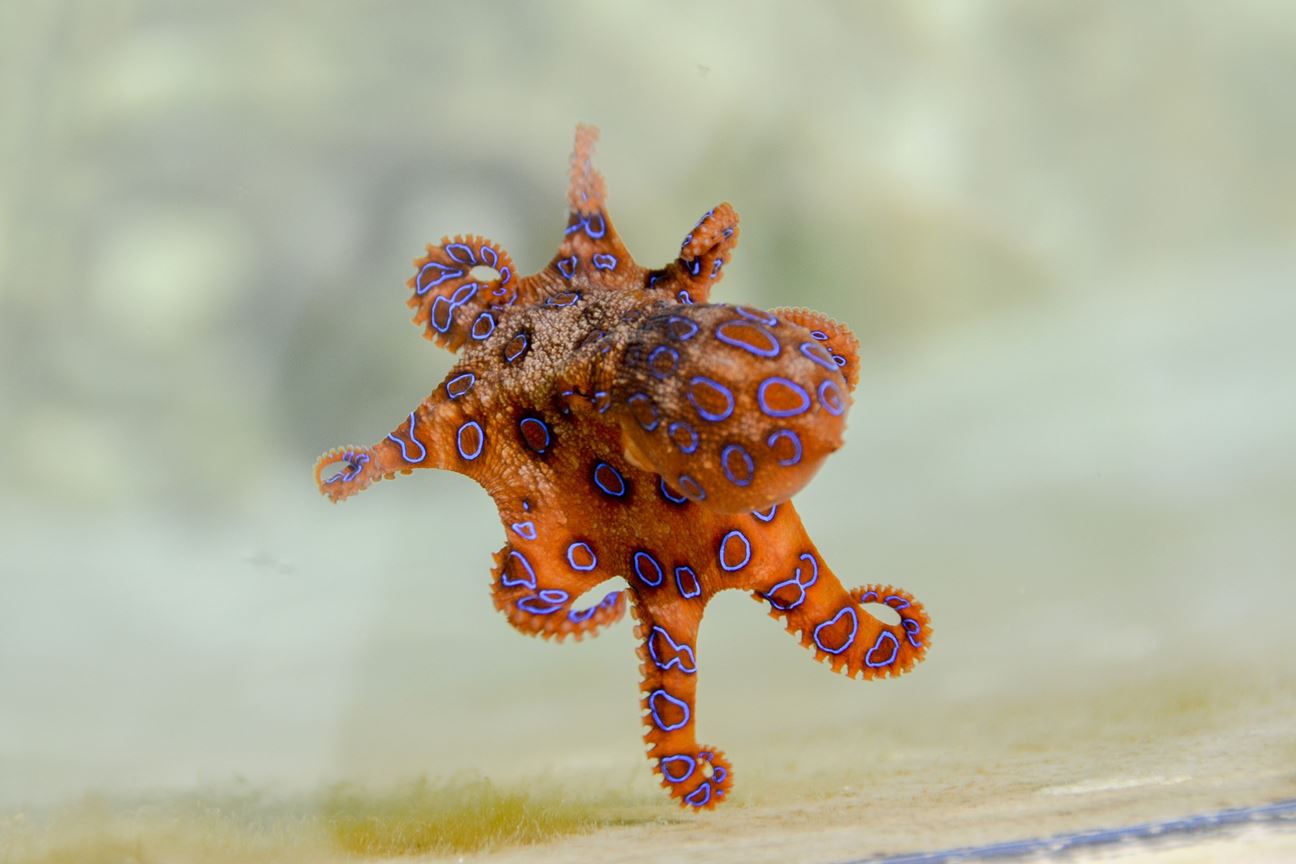
A bite of a blue-ringed octopus is considered one of the deadliest that can often result in paralysis or death. This little cephalopod may not have razor-sharp teeth, or even a size big enough to intimidate a potential danger, but it has a venomous neurotoxin called tetrodotoxin. This toxin is released through the octopus’ salivary glands and is considered being a thousand times more potent than cyanide. The amount of venom that this squishy cephalopod carries is enough to kill over 25 people. People are often unlikely to find them in situations like these, but unfortunately, if they do, the venom from the bite will first cut nerve signals to the brain, thus completely paralyzing them. The victims' motor skills and vision will also be compromised, and muscle paralysis may ultimately result in death.
Find them: In the waters of the Indo-Pacific Ocean. Though it is most prevalent in Australia.
Textile Cone Snail

Of the 500 species of cone snails living underwater, the textile cone snail is the deadliest. The snail’s cone is highly glossy with a whorl like pattern. It’s the colour that makes the snail highly attractive. They grow up to 9 centimetres. These snails live on the sand beneath the corals and rocks in shallow waters. Humans are at risk of being attacked when they either step on the snails under the water or pick them up from the beach. As one of the most venomous creatures underwater, textile cone snails jab their prey with their harpoon (hollow teeth) and then inject the toxic venom called Conotoxin. This venom is strong enough to kill up to 60 people. The Textile Cone Snails are perfectly harmless when left alone.
Find them: In the waters of the Indo-Pacific region — from eastern Africa to Hawaii and French Polynesia and Australia.
Porcupine Pufferfish
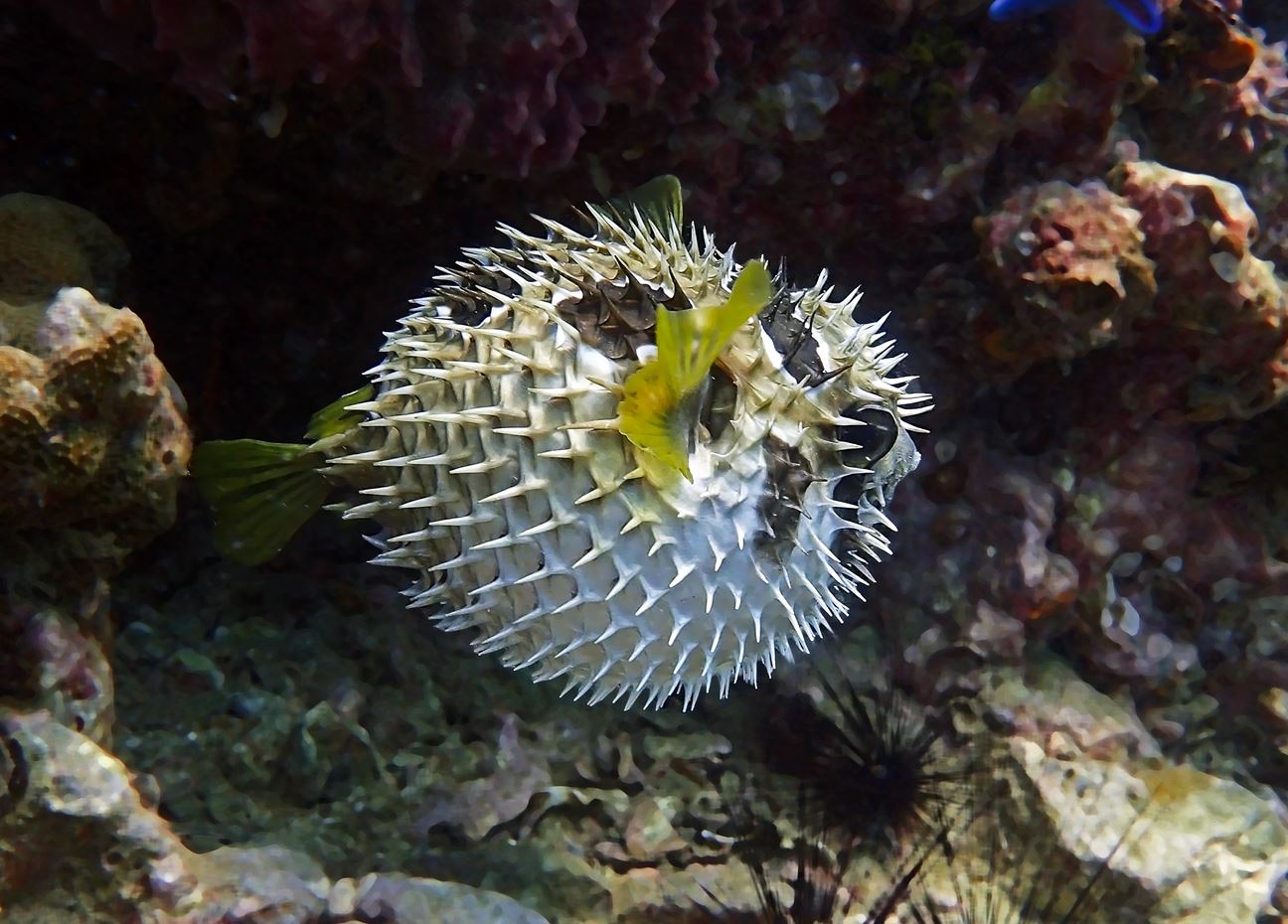
These fish can double in size when threatened! The Porcupine Pufferfish (or Porcupinefish) will inflate its body by taking in the surrounding water or air. It will then protrude its pokey spines in order to intimidate the potential threat. Similar to the blue-ringed octopuses, these fish also contain the deadly neurotoxin called tetrodotoxin. These awkward swimmers also have a beak-like tooth-plate which is made of four fused front teeth. This helps them slice their prey after having injected the venom. The porcupine pufferfish are known to have a semi-aggressive temperament and as adults can reach a maximum length of about three feet.
Find them: In the waters of the Mediterranean Sea, the eastern Pacific Ocean from San Diego to Galapagos Islands and even Chile, and the western Atlantic Ocean from Massachusetts to the Gulf of Mexico and extending up to Brazil.
Grey Side-Gilled Slug
The grey side gilled slugs were previously not known to be toxic. In 2009, following the death of many dogs along the coastlines of Auckland, it was found that the grey side gilled slugs contain the lethal tetrodotoxin - with no known antidote. Today, these slugs are considered one of New Zealand’s most toxic creatures. These slugs have a feathery gill on their right side, but no shell.
Find them: In the waters of New Zealand — along the North and South Islands coastlines.
Box Jellyfish

The Box Jellyfish is one of the world’s most poisonous marine animals. A few species of this box-shaped jellyfish, like Chironex fleckeri, Carukia barnesi and Malo kingi, are known to be the cause of deaths in human beings. Stings from other species of box jellyfish are extremely painful too. Their tentacles are covered in cnidocytes, each one of which contains tiny darts that are loaded with poison. Upon severe exposure, pain is followed by tissue necrosis, and death happens in less than 5 minutes.
Find them: In the waters of the Indo-Pacific region and northern Australia.